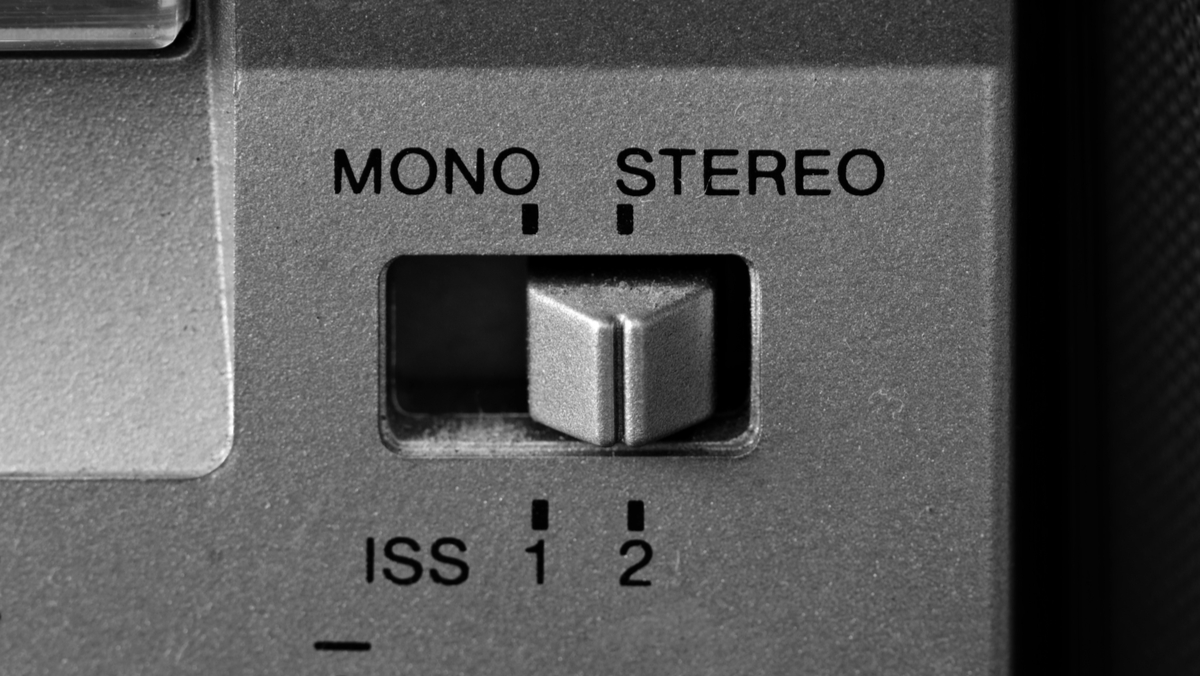One of the biggest challenges facing developers of services like Microsoft Teams or Zoom is providing a natural, non-fatiguing audio experience. In terms of audio reproduction, many applications rely on monophonic sound sources. At the same time, Immersitech’s SDKs provide a way to incorporate stereophonic sound to create a true 3-dimensional, natural, immersive experience that mimics real-world audio.
In this post, we will look at monophonic and stereophonic sound and their impact on the user’s brain.
What is Monophonic Audio?
Monophonic audio, or mono for short, means “one sound.” Mono sound is any sound – in most cases, music – that is recorded and played back using one microphone and a single audio channel. For example, one microphone recording an instrument is a mono recording because you’re using a single channel (and a single microphone) to pick up and record the sound. Even if you record multiple instruments and use a single microphone, it is a monophonic recording because all the instruments are captured and played back through one channel.
All you need to know and remember about mono is that it is a system of recording and playing back sound through a single channel. It doesn’t matter how many sounds, instruments, or people there are in the room. If it is all sent through one channel, it is mono.
Many conferencing systems approach audio like this. They take the input signals (individual voices and the surrounding noises) and collapse them into a single mono signal delivered to the user’s device of choice. In theory, if only one person speaks at a time, monophonic sound is fine; however, we all know the reality is quite different.
What is Stereo Audio?
Stereo audio is made through two distinct channels. Because it is recorded with multiple microphones, the audio playing on one side of the headset can be different from what is produced in the other. Stereo, in this instance, can create the illusion of immersion, but it doesn’t make a multidimensional, interactive soundscape.
In a stereo recording, audio is captured using two microphones simultaneously. Monophonic signals from each microphone are assigned to the left or right channel. The stereo effect is achieved by slightly varying the sound between the left and right channels. By placing the microphones at slightly different locations, the sound arrives at a slightly different time and slightly different level. The difference of just a few milliseconds is enough to create the illusion of width and space.
It wasn’t until the introduction of Dolby Stereo into theatres in 1975 that the public became familiar with what we refer to as “surround sound.” The rapid adoption of high-definition television in the early 2000s ushered in modern spatial audio into the home.
Immersitech, Brings Spatial Audio to Teleconferencing!
Immersitech’s audio processing technology brings the same advanced audio experience to virtual platforms. Our Engage SDKs allow developers to easily incorporate spatial audio into their platform to give users a completely immersive audio experience. We’ve removed the background noise, clarified users’ voices and used advanced spatial audio technology to create a truly immersive experience.
Ready to learn more? Contact Bill Sweeney, Director of Business Development at bill@immersitech.net or 585-888-3078 x703.
About Immersitech
Immersitech provides a unique portfolio of patented sound processing technology, deployed as easy to integrate Software Development Toolkits (SDKs) focused on providing advanced noise cancellation, voice clarity, and immersive spatial (3D) audio capabilities for Unified Communications, Distance Learning, and Social Entertainment applications in high growth areas like Gaming. Our multi-platform SDKs are designed to provide Service Providers with industry-leading audio capabilities leading to high-quality, immersive communication experiences at a competitive price.


